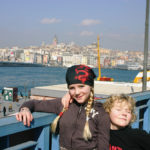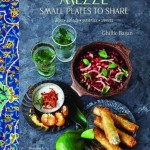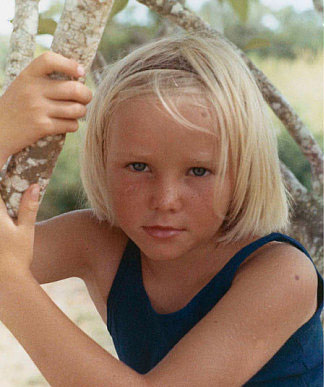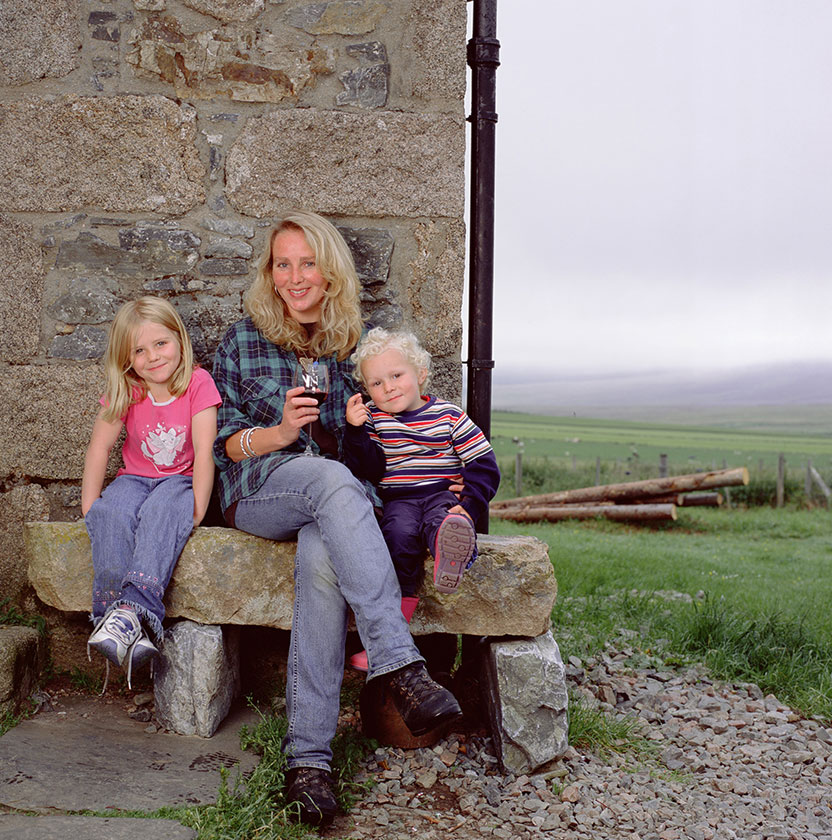Food Safari
Food Safari
Language of food: Turkey
May 2016
 I get a buzz from learning languages and make a point of it when I travel. The fact that I am even trying to pronounce words opens many doors and makes people happy. There are a couple of languages I rely on for my work but there are others, like Japanese, in which I only know a few phrases that I learnt a long time ago but those simple words bring great merriment to every Japanese encounter. There is, however, a language we can all speak – the language of food. In all its notes of pleasure, surprise, disgust, and greed, the language is global, superbly punctuated by the splendid silence of pure appreciation. Take the food language of the French, for example, with their oohs and aahs, the pursing and smacking of the lips, the exaggerated hand-gestures emphasizing surprise and satisfaction, and the chunk of fresh baguette wiped around the plate to mop up every dribble of yummy goodness– we are not left in any doubt as to whether they are enjoying their food or not.
I get a buzz from learning languages and make a point of it when I travel. The fact that I am even trying to pronounce words opens many doors and makes people happy. There are a couple of languages I rely on for my work but there are others, like Japanese, in which I only know a few phrases that I learnt a long time ago but those simple words bring great merriment to every Japanese encounter. There is, however, a language we can all speak – the language of food. In all its notes of pleasure, surprise, disgust, and greed, the language is global, superbly punctuated by the splendid silence of pure appreciation. Take the food language of the French, for example, with their oohs and aahs, the pursing and smacking of the lips, the exaggerated hand-gestures emphasizing surprise and satisfaction, and the chunk of fresh baguette wiped around the plate to mop up every dribble of yummy goodness– we are not left in any doubt as to whether they are enjoying their food or not.
But what do you know of the Turkish language with its soft and melodic notes when spoken with eloquence? What do you know about the Turkish language of food? There are the recognizable, universal hand-gestures and mannerisms and there are rituals dictated or encouraged by the Islamic faith, but there are also many unique words and phrases dedicated to the subject – expressions of welcome and greeting and enjoyment of the food; praise for the cook and blessings of health to the cook’s hands; metaphors and sayings for the ingredients; myths, legends and religious stories attached to the dish. Food is a never-ending topic of conversation, sometimes of heated debate, but like the French, it is always expressed with dramatic passion and enthusiasm. With the current spotlight on the refugee crisis and the turbulent politics of Turkey, it is easy to forget that it is a nation of warm hospitality and fabulous food and I am genuinely feeling for the country right now. There is a saying ‘greet a Turk and be sure you will eat’ as food is offered and shared wherever you go. If only politics was like food – uniting us around a table of pleasure, instead of creating vast divides.
 One of my favourite cities in the world is Istanbul. The atmospheric history of the spice trade and lavish Ottoman banquets oozes from the pores of the old city walls. Under one culinary roof, you can taste the spicy and hearty traditional dishes from different pockets of Anatolia alongside the more refined Ottoman classics, referred to as Saray (Palace) cooking. I used to sit on the balcony of my office high above the impatient tooting of car horns at the Tünel end of Istiklal Caddesi, marveling at the silent glide of the Russian tankers traveling from the Black Sea to the Aegean, or the old wooden boats, originally from the Clyde, ferrying people from the Golden Horn on the European side across the Bosphorus to Asia. I would look over to the Topkapı Palace, the seat of the Ottoman Empire, perched strategically on a hill to give the Sultans a splendid view of the sea routes and listen to the Call for Prayer echo across the water. At the height of the spice trade when the Ottomans and Spaniards ruled the seas, magnificence must have been wafting in the air, not just in Süleyman’s name!
One of my favourite cities in the world is Istanbul. The atmospheric history of the spice trade and lavish Ottoman banquets oozes from the pores of the old city walls. Under one culinary roof, you can taste the spicy and hearty traditional dishes from different pockets of Anatolia alongside the more refined Ottoman classics, referred to as Saray (Palace) cooking. I used to sit on the balcony of my office high above the impatient tooting of car horns at the Tünel end of Istiklal Caddesi, marveling at the silent glide of the Russian tankers traveling from the Black Sea to the Aegean, or the old wooden boats, originally from the Clyde, ferrying people from the Golden Horn on the European side across the Bosphorus to Asia. I would look over to the Topkapı Palace, the seat of the Ottoman Empire, perched strategically on a hill to give the Sultans a splendid view of the sea routes and listen to the Call for Prayer echo across the water. At the height of the spice trade when the Ottomans and Spaniards ruled the seas, magnificence must have been wafting in the air, not just in Süleyman’s name!
Years later, stuffed into a backpack, my little blonde daughter, Yazzie, would sing and giggle as people reached up to touch her, calling her malek (angel) as they gave her dried apricots, a fresh fig, a pinch of the cheeks, or a kiss. When she was able to run around on her own, it was my son, Zeki, who was stuffed into the backpack and given the same treatment, although he was called aslan (lion), an affectionate term for young boys, as they ruffled his white curly locks. We were always on the hunt for good meze (Turkish spelling), steered by my old friend and food enthusiast, Hasan, who would take us to the latest, the most unique, or most traditional meyhane where we would be fed and looked after like pampered pashas. The culinary landscape of Istanbul is like one giant moveable feast and no trip is complete without a stop at my special spice merchant, Devrim bey at Nil Baharat in Eminönü. Perched on a stool, sipping hot tea from a tulip-shaped glass, it is difficult to exercise restraint as the sacks of potent spices tease my appetite. Before I know it, I’ve ordered 100g ground sumak, 250g ground salep (orchid root), 500g oiled kırmızı biber (ground red chilli peppers), cumin, cinnamon, dried oregano and sage, ground pistachios, saffron, boxes of sakız (mastic), several bottles of pomegranate molasses and, from a nearby stall, fine coffee and a jar of mildly hallucengenic deli bal (‘silly honey’ from the nectar of poppies).
For over 30 years I have expressed my own private love affair with Turkey and her food through cookery workshops, numerous articles, and at least 6 books – I would happily write more as there are few places in the world with so much fascinating history on a plate. When I wrote my first book on Turkish food some 20 years ago, there were no others like it on the market and, to my surprise, it was shortlisted for two of the big food awards at the time, but now there are many books on the subject, some by people who’ve only been there for a brief touristic visit and some by people who have never been there at all! Such is the reliance on the Internet, enabling people to write about a country and its culinary traditions without any first-hand knowledge or experience, which can lead to many linguistic and cultural misunderstandings.
 For example, the current misuse of the word humus (hummus in Arabic), which simply means ‘chickpea’ and is also the name of the ubiquitous dish made with them when they are mashed or pureed, but fashionable foodies boldly give the label ‘hummus’ to any moosh, be it mashed feta with crushed olives or pureed butternut squash with cream cheese. And the frequent appearance of menemen and shakshuka on the metropolitan breakfast menu has led to some interesting claims of their origins. Similar in content and popular as street and bus station food, one dish is Turkish the other is Arab. Commonly referred to as a vegetable omelette in Turkey, menemen is prepared with sautéed peppers and tomatoes into which eggs are either cracked and left to set whole, or they can be stirred into the mixture and left to set like an omelette. Found throughout the eastern Mediterranean and North Africa, shakshuka (şakşuka in Turkish) is of Arab origin and has many regional variations but the eggs are cracked into it and left to cook whole as ‘shak’ implies that the egg is ‘cracked’ into the dish.
For example, the current misuse of the word humus (hummus in Arabic), which simply means ‘chickpea’ and is also the name of the ubiquitous dish made with them when they are mashed or pureed, but fashionable foodies boldly give the label ‘hummus’ to any moosh, be it mashed feta with crushed olives or pureed butternut squash with cream cheese. And the frequent appearance of menemen and shakshuka on the metropolitan breakfast menu has led to some interesting claims of their origins. Similar in content and popular as street and bus station food, one dish is Turkish the other is Arab. Commonly referred to as a vegetable omelette in Turkey, menemen is prepared with sautéed peppers and tomatoes into which eggs are either cracked and left to set whole, or they can be stirred into the mixture and left to set like an omelette. Found throughout the eastern Mediterranean and North Africa, shakshuka (şakşuka in Turkish) is of Arab origin and has many regional variations but the eggs are cracked into it and left to cook whole as ‘shak’ implies that the egg is ‘cracked’ into the dish.
But does all of this matter? Are people really bothered about the origins, or the correct use of food language? Perhaps not in the world of food fads but I think it does matter to the people of the country. The physical language of food may be universally understood but the culinary terminology and its cultural meaning is special to each culture. So, Özlem my friend, I think it is time we write that definitive book on Turkish food that we have been talking about. We need to introduce more Laz and Güney traditions and dig deep into the culinary foundations of Kayseri and Gaziantep. Meanwhile, for authentic Turkish food cooked by a lovely Turkish lady please check out Özlem Warren’s site, follow her on Facebook and Linked in, and sign up for one of her courses. She’s the real deal and passionate about her nation’s food: ozlemsturkishtable.com
I am going to leave you with 3 of my favourite recipes – one of ancient origin, one uniquely Anatolian, and one Ottoman delight from the palace kitchens.
Afiyet olsun!
Fırında Mantı
The first Turks to inhabit the region were tribal warriors who moved westwards on horseback through Central Asia, bringing with them their traditions of preserving meat in its fat and a noodle dough reminiscent of a Chinese dumpling. Traditionally, the noodle dough is stuffed, baked in the oven until crisp, then revived with stock and served with garlic-flavoured yogurt and a drizzle of melted butter. It falls somewhere between a dumpling and Italian pasta. Modern recipes often call for a boiled ravioli-style mantı but the traditional Anatolian dish is supreme in its uniqueness. The best mantı I have ever had was in fact made by a Russian woman married to a Turk who ran a tiny mantı house in the back streets of Istanbul which was packed with appreciators of his wife’s freshly made noodle dumplings.
Serves 4-6
For the dough:
450g/1lb plain flour
½ teaspoon salt
1 egg + egg yolk, lightly beaten
roughly 50ml/2fl oz lukewarm water
For the filling:
225g/8oz finely minced lamb or beef
1 onion, very finely chopped
1 teaspoon ground cumin
1 teaspoon ground coriander
1-2 teaspoons finely chopped dried red chilli
a small bunch of parsley, very finely chopped
salt
600ml/1pint chicken or beef stock
roughly 500g/9oz creamy plain yogurt (I use Yeo Valley)
2-3 cloves garlic, crushed
salt and freshly ground black pepper
1-2 tablespoons ghee or butter
1 teaspoon finely chopped dried red chilli
2 teaspoons dried mint or oregan
Preheat oven to 400F/Mark 6/200C
Sift the flour and salt into bowl. Make a well in the centre and pour in the beaten egg. Using your fingers, draw in the flour with splashes of water until it forms a dough. Knead for 5 minutes, cover with a damp cloth, and leave to rest for 1 hour.
Meanwhile, tip all the ingredients for the filling into a bowl, season with salt, and knead well. Beat the yogurt in a bowl with the garlic and season to taste with salt and pepper.
Roll out the dough and cut it into 4 pieces. Roll each piece as thinly as possible and cut into squares (approx. 1”/2.5cm square). Put a little of the filling into the middle of each square then bunch together the 4 corners to form a little parcel with a slight opening at the top.
Lightly grease an oven dish and place the mantı, side by side, in it so that they are tightly packed. Put the dish in the oven for about 20 minutes until the mantı are golden brown.
Bring the stock to the boil. Take the mantı out of the oven and pour the stock over them. Cover with aluminium foil and pop them back in to the oven for 15 minutes, until the mantı have absorbed the liquid.
Quickly melt the butter or ghee and stir in the chopped chilli. Serve the mantı straight from the oven with the yogurt spooned over the top, then drizzled with the butter and sprinkled with the dried mint or oregano.
Hot humus heaven
This is heaven in a clay dish! Sometimes things taste better in their utensil of origin – a wok, a tagine, a clay pot – so if you have an oven-proof clay dish, use it. I first had this humus 30 years ago in a tiny village near Kars in Eastern Anatolia. I had been travelling in PKK territory with a Kurdish-speaking colleague and, in order to decrease our vulnerability at road blocks, we filled the car with locals, one of whom invited us to spend the night in his tiny stone dwelling where his wife prepared this moreish, warm chickpea concoction topped with a puddle of melted ghee. As we dipped chunks of freshly baked flat breads into it, we really had a moment in heaven. Needless to say, I have been writing about it and enthusiastically devouring it ever since – even my Turkish friends were unaware of its existence.
Serves 4-6
2 x 400g cans of chickpeas, drained and thoroughly rinsed
2-3 cloves garlic, crushed
2 teaspoons cumin seeds
roughly 4 tablespoons olive oil
juice of 1 lemon
2 tablespoons tahini
6-7 tablespoons thick, creamy yogurt
sea salt and freshly ground black pepper
2-3 tablespoons pine nuts
1-2 tablespoons butter, or ghee
1 teaspoon finely chopped dried red chilli
Preheat the oven to 400F/mark 6/200C
Instead of using a mortar and pestle to pound the chickpeas to a paste in the traditional manner, make life easy and tip the chickpeas into an electric blender. Add the cumin seeds, garlic, olive oil, and lemon and whiz the mixture to a thick paste. Add the tahini and continue to whiz until the mixture is really thick and smooth. Add the yogurt and whiz until the mixture has loosened a little and the texture is creamy – the yogurt makes the humus lighter and mousse-like when cooked. Season to taste with salt and pepper and tip the mixture into a clay pot, or ovenproof dish.
Roast the pine nuts in small pan until they begin to brown and emit a nutty aroma. Add the butter, or ghee, to the pine nuts and stir until it melts. Stir in the finely chopped chilli and spoon the mixture over the surface of the humus. Pop the dish into the oven for about 20 minutes, until the hummus has risen a little and most of the butter has been absorbed.
Serve immediately – it is best when it is still hot – with chunks of warm crusty loaf, or strips of toasted pitta bread, and enjoy this divine chickpea puree with marinated olives and a salad.
Tavuk göğsü kazandibi
I love this pudding. My kids love this pudding. So did the Ottoman sultans as it is one of the delights from the Palace kitchen. Crucial to the pleasure of the pudding are the fine threads of cooked chicken, which must be thin enough to add texture but not so thick they are detectably meaty. Sounds bizarre? I assure you it is truly scrumptious! If, for no reason other than novelty, these thick, creamy puddings with a lightly burnt bottom are well worth trying and you might even be won over!
Serves 6-8, or more
1 chicken breast
5 tablespoons rice flour
850ml/1½ pints milk
300ml/½ pint cream
a pinch of salt
175g/6oz sugar
ground cinnamon for dusting
Place the chicken breast in a pan with enough water to just cover it. Bring the water to the boil, then reduce the heat and simmer until the breast is cooked. Drain the breast and tear it into very, very fine threads – almost as fine as thread for a needle.
In a bowl, slake the rice flour with a little of the milk to form a smooth paste, the consistency of thick double cream. Pour the rest of the milk and the cream into a heavy-based pot. Add the salt and sugar and bring it to the boil, stirring all the time, until the sugar has dissolved. Add a ladleful of the hot milk to the slaked rice flour, then tip it all into the pot and stir vigorously. Reduce the heat, stirring all the time, until the mixture begins to thicken. Gently beat in the threads of chicken and continue to simmer until the mixture is very thick.
Lightly grease a wide, non-stick, heavy-based frying pan and place it over the heat. When hot, tip the mixture into it and keep it over the heat for about 2 minutes to brown, or slightly burn, the bottom of the pudding – you can check by gently levering up an edge to peep beneath. Reduce the heat and move the pan around for 2-3 minutes to make sure the bottom is evenly browned – a little bit burnt is fine, but you are not looking for a charred pudding! Turn off the heat and leave the pudding to cool in the pan.
Using a sharp-pointed knife cut the pudding into small rectangles. Lift each rectangle out of the pan, using a spatula, and place them on a flat surface, burnt-side down. Roll each one over slightly, like rolling someone over in bed, so that the burnt side is up and the two long edges of the rectangle form a seam underneath. Place them seem-side down on a serving dish, cover them, and keep in the refrigerator. Serve chilled with a dusting of cinnamon.
Journeys of inspiration
January 2016
First, I must thank all of you who have subscribed to my blog – I am flattered there are so many of you – and I apologize for taking so long to update this section of my website. Aside from the trips described in this blog and the hours I work into the night, a huge chunk of my time is spent with my elderly mother who has dementia and, although this means I have to put many projects on hold and I have to turn down the ones that will take me away for long periods of time, I know my mother lives for my visits and would deteriorate fast if I didn’t spend the time with her. I’m sure many of you will understand what I mean.
This year, though, began with the awesome sight of the Northern lights – as if on cue they appeared just before midnight illuminating the sky as we toasted the New Year with champagne and good friends – some old, some new, and some, like my Finnish friend, Outi, happy with the bortsch and smoked salmon but missing a good sauna – a perfect beginning to what I hope will be a year of researching and creating projects to keep me out of mischief for the years ahead when I hope to continue with a series of journeys of inspiration – for myself and for others.
The first of these journeys was for my son, Zeki, who at 15 years old won a national award for Excellence in Mountain Culture and used the privilege to seek sponsorship to make a film – www.vimeo.com/146027153 in Yosemite National Park with a view to inspiring other young people to explore and conserve wild places by showing them the landscape that captivated John Muir in 1900s and drove him to fight for the conservation of our wilderness and the creation of the national parks. As I had to accompany him for part of the journey in California – fortunately not on the 72 mile trek in the peaks of the High Sierras as I found myself slightly breathless and dizzy at 9,000ft – I tied in some publicity for my book, Flavours of the Middle East, in San Fransisco, the highlight of which was a very enjoyable radio chat with the young and charming Joel Riddell on the popular show, Dining Around.
The second of these journeys of inspiration was with Zeki again. It started with the launch of my new book, Mezze, in Cape Town – an event steered by the effervescently charming, Karen Dudley – www.karendudley.co.za – best known in the Cape for her little lunch spot, the Kitchen, a den of delicious salads and voluptuous ‘Love Sandwiches’ which she prepares specially to suit the mood and character of each individual. So powerful is the lure of these sandwiches filled with love, the Obamas made a beeline for them on their presidential tour to South Africa.
While publicizing my book in the Cape, we squeezed in a quick detour to see my daughter, Yazzie, who was surfing up the coast and to see my dear friend, Monica von Habsburg, in Mozambique. Amidst the dry, dusty chaos of Tete, her lovely villa www.villahabsburg.com is like an oasis on the banks of the River Zambezi where the hippos wander into her garden at night. David Livingstone would have passed right by the location of her property on his way up the river but I’m sure he wasn’t presented with a crystal bowl of chilled pureed mangoes, freshly picked that morning. From there my son and I went to Namibia to spend some time with a small group of Bushmen in the Kalahari, almost at the border with Botswana, and to stay in a very special bush camp on the Skeleton Coast.
As my own roots began amongst the different tribes of East Africa and the anthropological nature of my work has taken me into remote villages in different parts of the world, it seems natural that my son should develop a passion for the traditional bushcraft and wilderness skills of indigenous peoples and feel right at home with the Jul’haansi tribe. He took with him gifts of flint and steel, chagga (a fungus that grows on birch trees used for carrying fire from one camp to another), bush knives and sharpening stones and he demonstrated some of our ancestral skills to the tribal hunter and elders. They were delighted with their gifts and broke off bits of chagga to stuff into their pipes along with dried porcupine droppings– if something is worth smoking, it is worth a lot! The children, some as young as 4 or 5 years old, watched with fascination and expertly cut up sisal and fruit with the sharp knives. The importance of learning and preserving traditional skills should never be underestimated in our technological age and Zeki was there to learn but he was also there to make the acquaintance with the tribe so that he can return frequently to help preserve their traditions. Together, we learnt a lot about the edible and medicinal herbs and fruit, how to make the poison for the arrows, and Zeki dug up a root to make his own bow and quiver. According to the Bushmen, he was ready to select a bride!
From the window of our bush plane, the remote camp at the Skeleton Coast was well camouflaged with sand-coloured tents set between rocky outcrops. It was a very special place on every level – the hospitality, the food, the sighting of the desert-adapted elephants and lions, in particular the 5 muscateers (5 young male lions) and their researcher, the remarkable conservationist Dr Flip Stander – and we ended our stay with a journey by Land Cruiser over the singing dunes to the seal colonies at the coast where there is a small museum with the dates of all the shipwrecks recorded in the 50s, 60s and 70s, until a lighthouse was erected in 1978. The only year there wasn’t a shipwreck in the 60s was in 1967 – the very year that I sailed with my family down the Skeleton Coast, round Cape Point, and up the other side to Mombasa to start our life in Kenya – what luck we must have had!
To complete the extraordinary experience of this deserted and eerily stunning coastline, our guide laid out a table and safari chairs right on the beach where we could watch the seals bombing in and out of the waves while we enjoyed a bottle of wine with meat balls, grilled chicken, and a refreshing pasta salad flavoured with curry spices and coriander. We returned to camp by bush plane, which flew quite low over the sea as it took off, affording us a bird’s eye view of sharks swimming alarmingly close to the shore – not a comforting sight for a mother whose daughter was surfing further round the coastline in South Africa. The female pilot only made it worse by declaring that nothing would induce her to surf in these waters as she often spotted sharks, including great whites, right behind the surfers! I was glad to get Yazzie home.
As I have said in my introduction to this blog page, food is memories, so I’m going to end here with the pasta salad we had at the Skeleton Coast.
Hoanib pasta salad
I wouldn’t rave about the food in Namibia – a lot of German influence and heavily reliant on big chunks of meat – but the cook at the remote tented camp on the Skeleton Coast produced the best meals we had on our trip. With a smile as big as Africa, she managed to whip up amazingly fresh and tasty dishes using vegetables, herbs and spices which had to come in to camp by bush plane and was a refreshing change in a world of heavy meat. This pasta salad has become a favourite in our house and it keeps well in the fridge.
For a big bowl to serve 4-6, or more if part of a spread:
roughly 500g penne, cooked to al dente, drained and refreshed
2-3 yellow and red bell peppers, finely chopped
6-8 spring onions, trimmed and finely sliced
roughly 250g small, sweet tomatoes (eg. cherry, sugar drop, tomalini), cut into quarters
a big bunch of fresh coriander, finely chopped
For the dressing:
150ml/¼ pt olive or rapeseed oil
150ml/¼ pt white wine vinegar
juice of 2 lemons
1-2 tablespoons runny honey
2-3 garlic cloves, crushed
1-2 tablespoons mild curry spice
2 teaspoons ground ginger
sea salt and freshly ground black pepper
Put the pasta into a large bowl and add the finely chopped peppers, spring onions, tomatoes, and coriander.
In a small bowl, beat together the dressing ingredients and season well. Make sure the dressing is strong and adjust the spice and sweetness according to your taste – my son always adds more my honey to my dressing as that’s how he likes it.
Pour the dressing over the pasta and peppers and toss really well. Tip the salad into a serving bowl and enjoy for lunch or supper with grilled meats, fish, other vegetarian dishes, or simply on its own.
Where did it all begin?
June 2015
According to my parents, it all began in 1963 when I was ten months old. Heading to America, where my father was due to work in the Johns Hopkins Hospital, we set sail from Greenock on the Empress of England and it was on this voyage, they say, that I shunned baby food for olives, anchovies and savoury canapes which were slipped to me by friendly ship stewards. My little hand reached out every time a tray passed by me and my taste buds were tickled forever more.
After America, we moved to East Africa, where my palate was further widened by the gamey flavours of roasted and smoked guinea fowl, impala, kongoni, waterbuck and 110lbs of Nile perch, which my mother caught in the crocodile-infested waters of Lake Turkana.
The Nile perch narrowly missed the Guinness Book of Records but we ate it for days – for breakfast, lunch and supper! My memories of childhood are peppered with happy images of my brother and I tucking into big, juicy mangoes and pawpaws for breakfast, drinking gallons of homemade passionfruit juice, climbing trees for fresh loquats, and using chunks of skinned snake to bait the talapia in the rivers.
In the kitchen I picked ants out of the sugar and took baking lessons with a plump lady called Bunty. And when the wide African skies burst with heavy rain, we rushed outside with butterfly nets to catch the white-winged termites that took to the air en masse. Once we had a full bucket, I helped our cook pluck off the wings before he fried them in butter and garlic – an African delicacy reminiscent of fried prawns.
The experience of living in the wide, open spaces of East Africa has been at the core of everything I have done since. It is why I studied Social Anthropology at university; it is why a remote glen in the Scottish hills is my sanctuary; and it is at the root of my travels and passion for learning about different cultures and food – not the food on my plate, but the story behind it.
The combination of food and anthropology has taken me on many memorable journeys through some of the most ancient culinary cultures of the world where I have had the chance to enjoy dishes that few have ever even heard of.
Ironically, I have settled in an old cottage in the Scottish Highlands where the traditional dish is a bowl of thick porridge. Battered by blizzards and snowbound in winter, I have single-handedly raised my children here, putting on our cross-country skis to ski to school while the sun is rising and to ski back home in the clear moonlight, or with head torches to guide our way in the mist.
When it comes to food, I have to bring up the supplies in a backpack or on a sleigh and, in my warm kitchen with views to the hills, I run what must be the most remote cookery workshops in the UK.
As this is my first blog, I would like to share two recipes from my childhood in Kenya. I prepared both for The Inner Child series on Radio Scotland and the pawpaw recipe also featured in my Commonwealth Series for Radio Scotland’s Kitchen Café.
Masai Mara
This dish is interesting because it crops up in the safari lodges of Kenya and Tanzania – particularly those located in the Masai Mara – but it is originally an Arab dish and would have come to the shores of East Africa with the early Arab traders. The Middle Eastern version of this dish is called Muhammara in Arabic. It is delicious served with warm crusty bread or crudité to dip in it, but it is also served in the lodges as a sauce for grilled or roasted chicken and guinea fowl.
Serves 4-6 as a dip
3 red bell peppers
2-3 tablespoons olive oil
2 slices white bread broken into small pieces
juice of 2 lemons
3-4 cloves garlic, crushed
4 tablespoons roasted pecan nuts
2 teaspoons roasted ground cumin
1 tablespoon runny honey
1-2 teaspoons finely chopped dried chilli
1 teaspoon dried mint
sea salt and freshly ground black pepper
a small bunch fresh coriander, finely chopped
Roast the peppers in olive oil in the oven for 30-40 minutes until the skin is buckled and charred.
Put the bread into a bowl, pour over the lemon juice, and leave to soak.
Skin the peppers, deseed them and roughly chop the flesh. Put the flesh into a blender with the roasting oil, garlic, and pecan nuts and whiz to a thick paste. Add the soaked bread, cumin, honey, dried chillies, and mint and whiz with a little extra oil until smooth and thick.
Season to taste and beat in most of the fresh coriander. Tip the mixture into a bowl, garnish with the rest, of the coriander, and serve with chunks of crusty bread, strips of toasted pitta bread, or with thin batons of raw carrot and celery.
Pawpaw and lentils with coconut milk and lime
Our cook used to prepare this dish when the local pawpaws (papayas) were slightly unripe and firm. We often had ripe, juicy pawpaw for breakfast but I always found it fascinating when the Africans would use fruit like a vegetable in savoury dishes – small, firm bananas are often cooked this way too. Quick and easy, this recipe is a favourite in our family.
Serves 4
1-2 tablespoons ghee
1 onion, finely chopped
a big knob of fresh ginger (roughly 50g), finely chopped
3-4 garlic cloves, finely chopped
1-2 teaspoons coriander seeds
1-2 teaspoons cumin seeds
1 tablespoon grated or crumbled jaggery, or honey
2 teaspoons harissa paste
3 medium-sized firm pawpaws (papayas), peeled, seeded and cut into bite-sized chunks
250g lentils, (brown or green), cooked to al dente
400ml coconut milk
a bunch fresh coriander, finely chopped
sea salt
freshly ground black pepper
200ml double cream
1-2 limes, cut into quarters
Heat the ghee in a heavy-based pan and stir in the onion, ginger, garlic, coriander and cumin seeds for 2-3 minutes. Add the jaggery and stir until the onions begin to colour.
Stir in the harissa paste, then toss in the pawpaw chunks, coating them in the spices. Add the lentils for 1-2 minutes, stir in the coconut milk, and cook gently for 10 minutes.
Toss in most of the coriander and season well to taste. Drizzle the cream over the top and scatter the rest of the coriander on top. Serve hot with lime wedges to squeeze into it.





